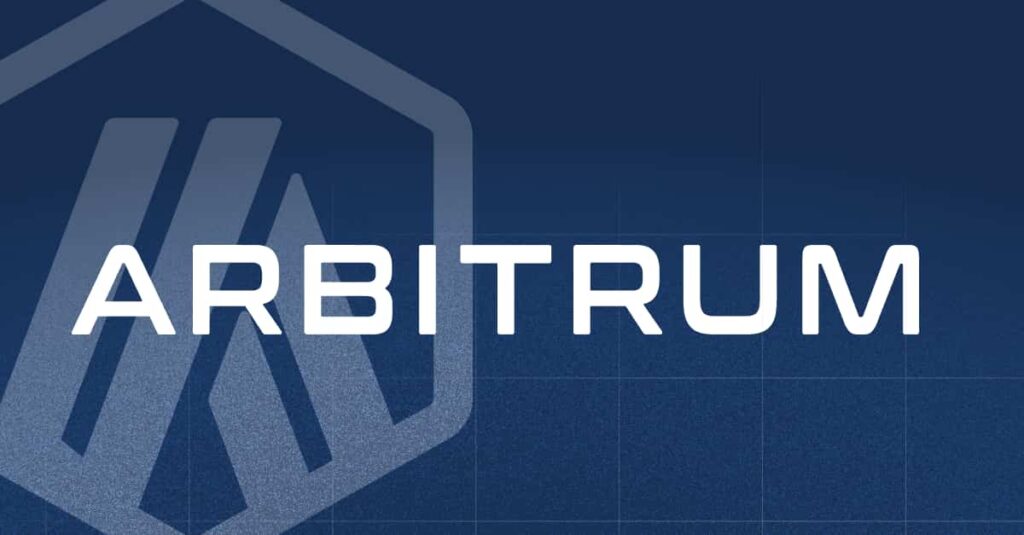Ethereum’s dominance in blockchain persists, but its scalability challenges—high gas fees and limited throughput—continue to drive demand for Layer-2 (L2) solutions. Arbitrum, developed by Offchain Labs, stands out as a premier L2 scaling platform, utilizing Optimistic Rollups to enhance Ethereum’s performance. Launched in 2021, Arbitrum has matured by March 12, 2025, into a vital infrastructure layer for DeFi, NFTs, and dApps, balancing scalability with Ethereum’s security. This article explores Arbitrum’s technology, ecosystem, advantages, and future potential in the evolving blockchain landscape.
1. What is Arbitrum?
1.1 The Problem Arbitrum Solves
Ethereum’s congestion—handling ~15–30 TPS pre-sharding—resulted in gas fees peaking at $50+ during 2021’s bull run, pricing out many users. Arbitrum addresses this by processing transactions off-chain, reducing costs to $0.05–$0.20 and boosting throughput, all while leveraging Ethereum’s L1 security. By 2025, with Ethereum’s sharding live, Arbitrum complements rather than competes, offloading dApp activity.
2. How Arbitrum Works (Updated)
2.1 Optimistic Rollups Explained
- Mechanism: Arbitrum executes transactions off-chain, assuming validity (“optimistic”), and batches them into rollups submitted to Ethereum. Fraud proofs resolve disputes, verified via Ethereum’s L1.
- 2025 Performance: Achieves ~3,000–5,000 TPS in practice (theoretical max ~100,000 TPS), with finality in ~1–2 seconds plus a 7-day challenge period for withdrawals to L1.
- Evolution: The 2024 Nitro upgrade slashed fees by 90% and boosted throughput, solidifying Arbitrum’s edge.
2.2 The Role of Ethereum
- Security Anchor: Arbitrum posts rollup data to Ethereum, relying on its 500,000+ validators for final settlement. By 2025, Ethereum’s sharding enhances L1 capacity, but Arbitrum’s off-chain processing remains critical for cost efficiency.
- Trustless Design: Users retain Ethereum-grade security without trusting centralized intermediaries.
3. Key Features of Arbitrum (Updated)
3.1 Scalability and Lower Fees
- Throughput: Arbitrum processes 3,000–5,000 TPS in 2025, dwarfing Ethereum’s pre-sharding 15–30 TPS and complementing its post-sharding 1,000+ TPS on L1.
- Fees: Average costs of $0.05–$0.20 per transaction (vs. Ethereum’s $0.10–$0.50 post-sharding) make it ideal for microtransactions and high-frequency dApps.
3.2 Security and Decentralization
- Security: Inherits Ethereum’s battle-tested consensus, with fraud proofs ensuring integrity. The 2024 decentralization push reduced sequencer reliance, enhancing trustlessness.
- Validator Network: ~100 validators secure Arbitrum One by 2025, with plans for broader participation.
3.3 Compatibility with Ethereum
- EVM Parity: Arbitrum supports Solidity and Ethereum’s tooling (e.g., MetaMask, Hardhat), enabling seamless dApp migration. Over 70% of Ethereum dApps have Arbitrum deployments in 2025.
- User Experience: Bridges like Arbitrum Bridge (handling $10B+ in assets) ensure frictionless L1-L2 transfers.
4. Arbitrum Ecosystem (Updated for 2025)
4.1 DeFi and dApp Adoption
- TVL: Arbitrum’s DeFi TVL exceeds $5 billion by March 2025, trailing Polygon ($3–$5B) but rivaling Optimism.
- Key Protocols:
- Uniswap: ~$1B TVL on Arbitrum, leveraging low fees for swaps.
- Aave: $800M+ in lending volume, optimized by Nitro.
- SushiSwap: Cross-chain swaps thrive with Arbitrum’s speed.
- GMX: A perpetuals platform with $500M+ TVL, dominating Arbitrum DeFi.
4.2 NFT Projects and Gaming
- NFTs: OpenSea and Treasure DAO drive ~10% of NFT volume on Arbitrum ($1B+ annually), with minting fees under $0.10.
- Gaming: Titles like Pirate Nation and The Beacon leverage Arbitrum’s scalability, supporting 100,000+ daily players in 2025.
4.3 Developer Tools and Support
- Arbitrum Nitro: The 2024 stack doubles throughput and cuts costs, with SDKs simplifying dApp deployment.
- Grants: Offchain Labs’ $100M+ ecosystem fund (2023–2025) fuels 1,000+ projects, from DeFi to Web3 tools.
- Bridges: Arbitrum Bridge and third-party solutions (e.g., Hop Protocol) move $15B+ in assets by 2025.
5. Challenges and Criticisms (Updated)
5.1 Competition from Other Layer-2 Solutions
- Optimism: Similar Optimistic Rollups (~2,000 TPS, $0.05 fees) compete, though Arbitrum’s TVL and dApp count lead.
- zk-Rollups: Polygon zkEVM (5,000 TPS) and zkSync offer faster finality, challenging Arbitrum’s dominance. Ethereum’s sharding narrows the L2 gap but sustains demand.
- Solana: L1 speed (2,000–4,000 TPS) lures some developers, though Ethereum loyalty keeps Arbitrum relevant.
5.2 Centralization Risks
- Sequencer: The centralized sequencer (run by Offchain Labs) processed 90% of transactions pre-2024. By 2025, a decentralized sequencer pool (10+ nodes) mitigates this, though full decentralization lags zk-rollups.
- Validators: ~100 validators vs. Ethereum’s 500,000+ spark debate, with expansion planned for 2026.
5.3 Adoption and Network Activity
- Growth: ~500,000 daily active users in 2025, but slower adoption vs. Polygon’s 1M+ reflects zk-rollup competition.
- Challenge Period: The 7-day withdrawal delay to L1 frustrates users, though third-party fast bridges (e.g., Across) alleviate this.
6. The Future of Arbitrum (Updated for 2025 and Beyond)
6.1 Continued Expansion of DeFi
- Projection: TVL could hit $10B by 2027 as GMX, Uniswap, and new protocols scale. Arbitrum’s low fees ensure DeFi dominance among cost-sensitive users.
- Arbitrum Orbit: Custom rollup chains (launched 2023) grow to 50+ by 2025, hosting niche DeFi ecosystems.
6.2 Ethereum 2.0 and Layer-2 Integration
- Synergy: Ethereum’s 2025 sharding (100,000 TPS potential) boosts L1 capacity, but Arbitrum’s $0.05 fees and 3,000 TPS keep it essential for dApps.
- AggLayer Ties: Integration with Polygon’s AggLayer (2025) enhances L2 interoperability.
6.3 Interoperability and Future Upgrades
- Cross-Chain: Orbit chains bridge to Cosmos and Polkadot by 2026, expanding Arbitrum’s reach.
- Arbitrum Stylus (2025): Adds WASM support alongside EVM, doubling developer flexibility and dApp diversity.
- Decentralization: Full sequencer decentralization by 2026 targets 1,000+ validators.
6.4 Price Potential
- ARB Token: Launched in 2023, ARB trades at $1–$1.50 in 2025 (hypothetical), with $2–$3 plausible by 2027 if TVL and adoption soar.
7. Conclusion
As of March 12, 2025, Arbitrum stands as a leading Ethereum L2 solution, blending Optimistic Rollups with Ethereum’s security to deliver scalability (~3,000 TPS) and low fees ($0.05–$0.20). Its robust DeFi ecosystem, NFT traction, and gaming growth—bolstered by Nitro and Orbit—underscore its maturity. Challenges like competition and sequencer centralization persist, but upgrades and Ethereum synergy position Arbitrum for longevity. As a scalable, developer-friendly layer, Arbitrum is poised to shape Ethereum’s future, potentially driving mass adoption in Web3.


